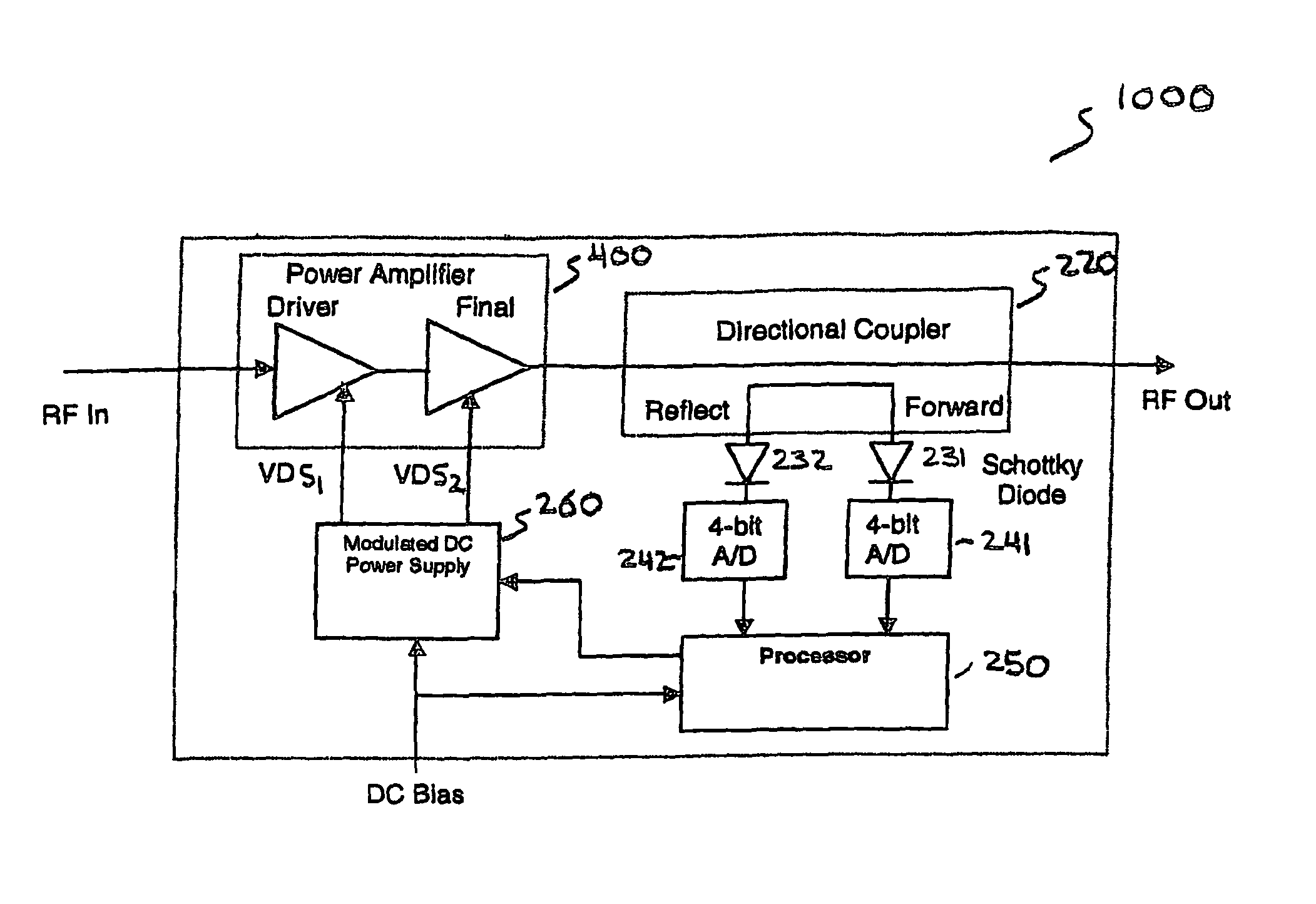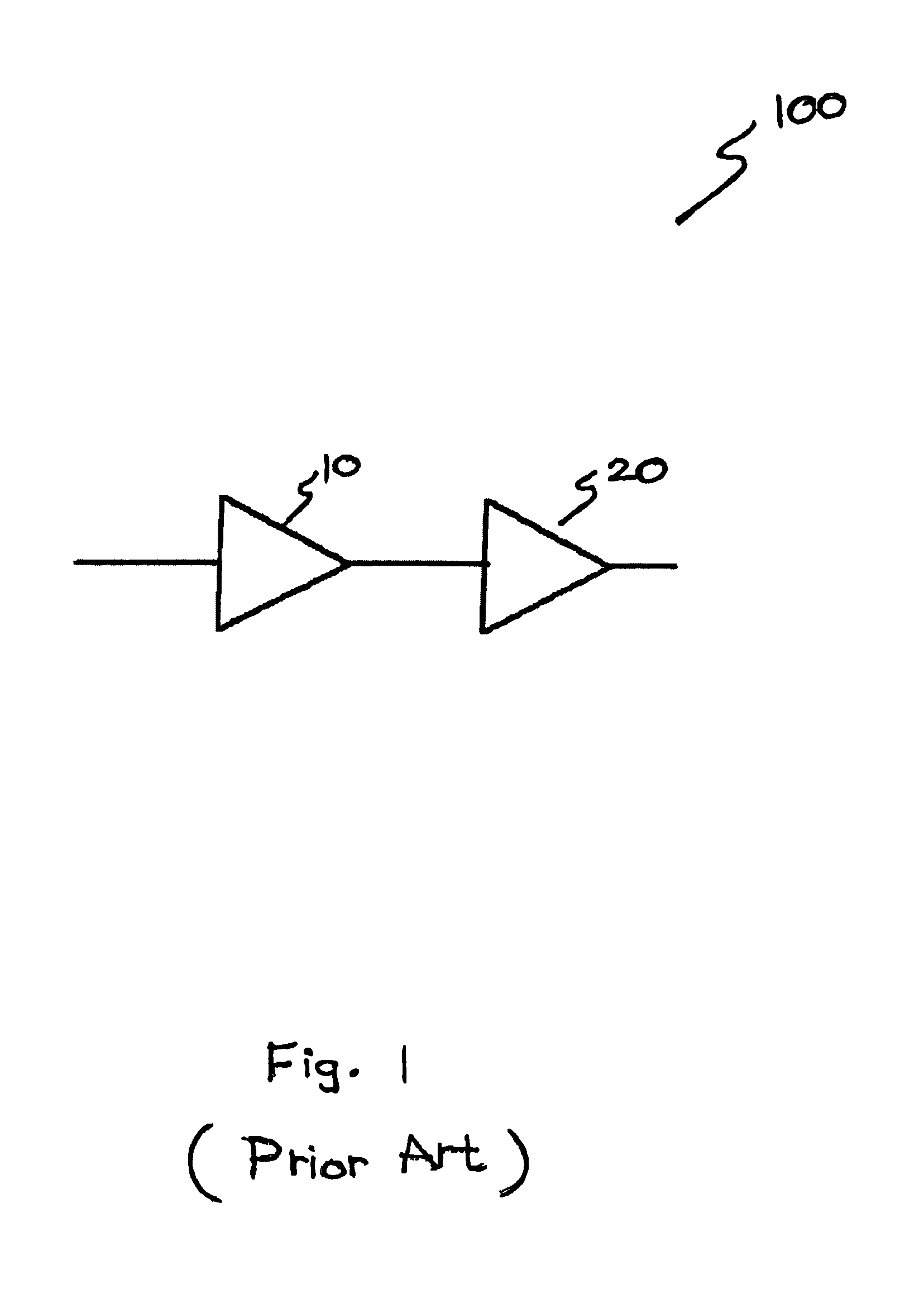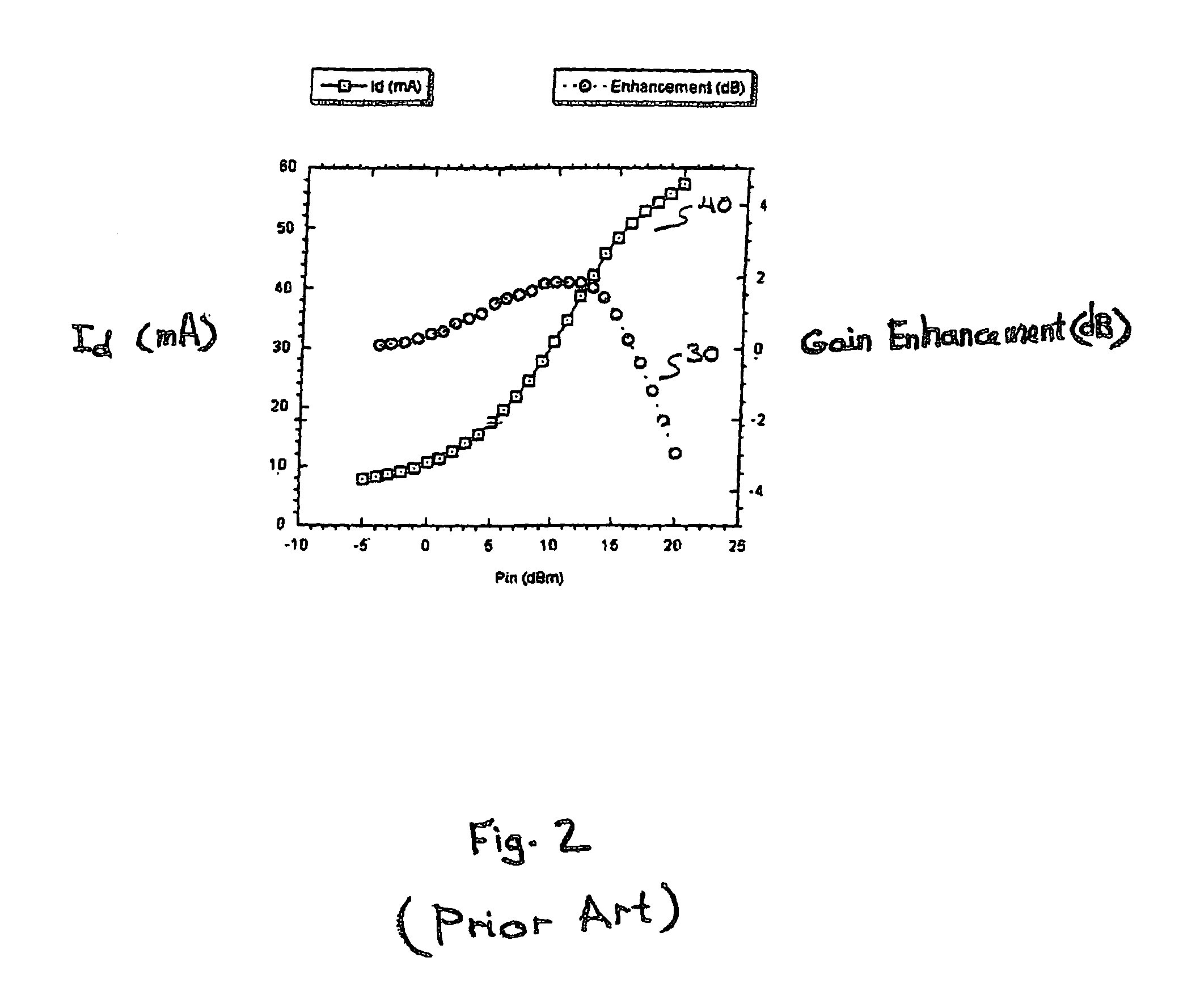High efficiency linear microwave power amplifier
a power amplifier and linear technology, applied in the direction of amplifier combinations, automatic tone/bandwidth control, gain control, etc., can solve the problems of increasing the noise figure of the amplifier, heat drop, and large amount of heat generated by the power amplifier, and achieve high output power, high efficiency, and high efficiency
- Summary
- Abstract
- Description
- Claims
- Application Information
AI Technical Summary
Benefits of technology
Problems solved by technology
Method used
Image
Examples
Embodiment Construction
[0038]FIG. 4 shows a two-stage amplifier 400 including an exemplary arrangement of amplifier stages according to the embodiments of the present invention. In this embodiment, the pre-distortion biasing scheme used for the FETs of the two stages 10, 20 shown in FIG. 1 is reversed. In other words, in two-stage amplifier 400 of this figure, a driver amplifier 70 is formed by a class A or class AB amplifier and is followed by a power or final stage amplifier 80 formed by a class B or class C amplifier. This arrangement presents a post-distortion approach to the linearity problem.
[0039]Class C amplifiers, despite their high efficiency, are rarely used in the field because their output suffers from a high degree of distortion and needs filtering. At the same time, gain expansion or gain enhancement, such as that shown in FIG. 2, mostly occurs in the high efficiency class C mode.
[0040]Combining gain expansion with class C amplifier operation offers a novel approach for compensating for the...
PUM
 Login to View More
Login to View More Abstract
Description
Claims
Application Information
 Login to View More
Login to View More - R&D
- Intellectual Property
- Life Sciences
- Materials
- Tech Scout
- Unparalleled Data Quality
- Higher Quality Content
- 60% Fewer Hallucinations
Browse by: Latest US Patents, China's latest patents, Technical Efficacy Thesaurus, Application Domain, Technology Topic, Popular Technical Reports.
© 2025 PatSnap. All rights reserved.Legal|Privacy policy|Modern Slavery Act Transparency Statement|Sitemap|About US| Contact US: help@patsnap.com



